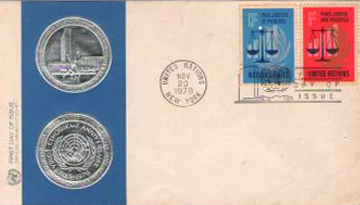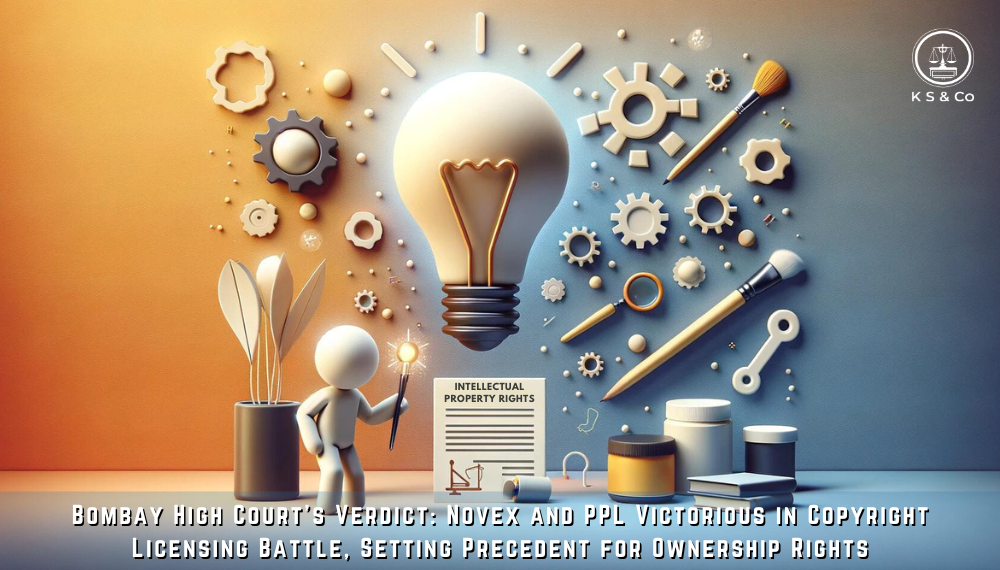
February 16, 2019
The Insolvency and Bankruptcy Code at work
In 2016, India embarked on its journey of building a dedicated framework for resolving cases involving insolvency and bankruptcy, and in no time the National Company Law Tribunals (NCLTs) started approving revival of bad loans. Today, we bring to you some reformative judgments of the last month that will be paving the road ahead.
Supreme Court upholds the constitutional validity of the IBC in its entirety
In the case of Swiss Ribbons Pvt. Ltd. & Anr v. Union of India, the Supreme Court on January 25, 2019, upheld the constitutional validity of the IBC in its entirety, quashing a number of petitions that had challenged its several provisions. Some of the important observations made by the Supreme Court in this judgment can be summed up as under:
- Operational creditors are not at par with the financial creditors and there is an intelligible differentia between the two which has a direct relation to the objects sought to be achieved by the Code. The Court observed that financial creditors are in the business of money lending and are best equipped to assess viability and feasibility of the business of the corporate debtor unlike the operational creditors who are involved only in recovering amounts that are paid for goods and services provided by them. Thus, financial creditors can engage in restructuring of the loan as well as reorganization of the corporate debtor’s business when there is financial stress, which are things that the operational creditors are not equipped to do.
- Even though a set-off of amounts due from financial creditors is a rarity, a legitimate set-off can be considered at the stage of filing of proof of claims during the resolution process by the resolution professional. Likewise counterclaims being independent rights are not taken away by the Code and are preserved for the stage of admission of claims during the resolution plan. Moreover, there is nothing in the Code which interdicts the corporate debtor from pursuing such counterclaims in other judicial forums.
- Under the Code, a resolution professional is given administrative as opposed to quasi-judicial powers. The resolution professional is a facilitator of the resolution process, whose administrative functions are overseen by the CoC and by the adjudicating authority.
- A “related party” will be disqualified from submitting a resolution plan only when he is connected with the business activity of the ineligible resolution applicant. Thus, a relative will fall under the definition of “related party” and will be disqualified from submitting a resolution plan only if he is connected with the business activity of the resolution applicant.
Supreme Court rules that NCLT has no jurisdiction to enquire into justness of rejection of the resolution plan
In K. Sashidhar v. Indian Overseas Bank, the Supreme Court considered appeals from the common judgment and order of the NCLAT in relation to the insolvency resolution process concerning Kamineni Steel & Power India Pvt. Ltd. and Innoventive Industries Ltd., and held that NCLT has no jurisdiction and authority to analyse or evaluate the commercial decision of the CoC. The Supreme Court observed that upon receipt of a “rejected” resolution plan, the adjudicating authority is obligated to initiate liquidation process under Section 33(1) of the Code. The Apex Court held that the fact that majority of the financial creditors had accorded approval to the resolution plan would be of no avail, unless the approval is by a vote of not less than 75% of voting share of the financial creditors (after amendment of 2018 w.e.f. June 06, 2018, it has been revised to 66%). The Appellants also contended that the requirement of the resolution plan to be approved by a vote of not less than 75% of voting share of the financial creditors was only directory and not mandatory. However, the Apex Court held that the word “may”, in Section 30(4) of the Code, is ascribable only to the discretion of the CoC to approve the resolution plan or not to approve the same. The requirement of “not less than seventy five percent of voting share of the financial creditors” to treat the resolution plan as duly approved by the CoC is the quintessential and mandatory. It was further noted that the legislature had consciously not provided for a ground to challenge the justness of the “commercial decision” expressed by the financial creditors and such commercial decisions were non-justiciable. Furthermore, non-recording of reasons for approving or rejecting the resolution plan by financial creditors would not render the final decision of CoC nullity per se.
NCLAT upholds the right of resolution applicants to submit revised resolution plans
In Tata Steel Limited v. Liberty House Group Pte. Ltd. & Ors., the NCLAT rejected the appeal filed by Tata Steels, against consideration of revised resolution plans in the insolvency process of Bhushan Power and Steels, holding that it is open to the CoC to call for and consider the improved financial offers in accordance with the statutory mandate to ensure value maximization. The NCLAT held that the CoC have absolute discretion to update, amend or supplement the information, assessment or assumptions and right to change, update, amend, supplement, modify, add to, delay or otherwise annul or cease the resolution process at any point in time. Even though NCLAT upheld the right of the resolution applicants to submit revised resolution plans, it held that all such processes should be completed within the time frame provided under the law. It was further held that that the appeal preferred by Tata Steel Limited was premature as the resolution professional was yet to submit the approved resolution plan before the NCLT, and no decision had been taken by the NCLT approving the resolution plan.
Promoters cannot close insolvency process against company by offering to pay off the outstanding dues under the IBC
In Essar Steel Asia Holdings Ltd. & Ors. v. Satish Kumar Gupta & Ors., before NCLT Ahmedabad, the promoters of Essar Steel had filed application under Section 60(5) of IBC seeking consideration of its settlement plan dated October 25, 2018 by the Committee of Creditors (CoC) and termination of the insolvency process. It had offered to pay Rs. 54,839 crores, as opposed to the resolution plan of Arcelor-Mittal for an amount of Rs.47,507 crores which had been approved by the CoC. However, NCLT Ahemdabad rejected the debt settlement proposal stating that an application for withdrawal of insolvency proceedings under Section 12A of IBC can be considered only if it was filed by the applicant who initiated insolvency in the first place and could not be entertained indirectly under Section 60(5) of the Code. It was further held that the shareholders do not have a legal right to oppose the admission of an Insolvency Petition or to oppose the CIRP. The applicants contended that they have the right to redeem the debt under Section 91 of the Transfer of Property Act, 1882, as the majority-shareholders of the company having 70% stake in it. The NCLT stated that the shareholders have no substantive right to redeem debt as the provisions of IBC have an overriding effect over other laws. The promoters have appealed to the NCLAT against the above order of the NCLT which is pending hearing.
NCLAT rules that the creditor can proceed against guarantor before proceeding against the debtor
The National Company Law Appellate Tribunal (NCLAT) on January 8, 2019, held that financial creditor can proceed against corporate guarantor even before proceeding against the corporate debtor. The facts giving rise to the instant appeal were that M/s. Piramal Enterprises Ltd. (Financial Creditor) had advanced a loan to All India Society for Advance Education and Research (Principal Borrower) which was guaranteed by Sunrise Naturopathy and Resorts Pvt. Ltd. and Sunsystem Institute of Information Technology Pvt. Ltd. (Corporate Guarantors). On occurrence of default, the Financial Creditor filed two separate applications for initiation of the Corporate Insolvency Resolution Process (CIRP) under Section 7 of the Insolvency and Bankruptcy Code, 2016 (the Code/ IBC), against the Corporate Guarantors which were admitted by the NCLT. The Corporate Guarantors appealed to the NCLAT against this admission contending that CIRP could not be initiated against guarantors, without first proceeding against the debtor. It was also contended that CIRP cannot be initiated against two corporate guarantors simultaneously for the same set of debt. Referring to a plethora of Supreme Court judgments, the NCLAT held that counter-indemnity obligation in respect of a guarantee comes within the meaning of ‘financial debt’ under Section 5 (8) (h) of the Code and the liability of guarantor is co-extensive with that of the principal debtor. Thus, the Financial Creditor may not exhaust his remedies against the Principal Borrower before initiating any CIRP against the Corporate Guarantors. The NCLAT also held that there is no bar under the IBC for filing simultaneously two applications under Section 7 of the IBC; however, once an application under the said Section 7 is admitted against one corporate guarantor, another application cannot be filed again against the other corporate guarantor for the same debt.
NCLAT holds that NCLT cannot decide inter-se claims by parties over assets of corporate debtor
In this case, NCLAT considered appeals filled by M/s.Dynepro Private Limited and M/s IU International Holdings PTE Ltd. against Mr. V. Nagarajan who had been appointed as Resolution Professional (Resolution Professional) in ‘M/s.Cethar Limited’ (Corporate Debtor) insolvency case. It was contended on behalf of the Appellants that the Resolution Professional had wrongly treated the articles handed over by them to the Corporate Debtor for contract work as its assets. It was further contended by the Appellants that the Corporate Debtor held them in the capacity of a bailee and not as full owner, and as such the articles could not be regarded as the assets of the Corporate Debtor. NCLAT affirming the decision of NCLT Chennai, rejecting the applications noted that there were claims and counter-claims over the disputed articles by several parties apart from the Appellants. It held that as the claim is not against the Corporate Debtor or its subsidiaries but includes inter-se claims for the same very material, such dispute cannot be decided by the NCLT. Thus, the dispute was outside the purview of the Code. It further held that the persons claiming right and title over the material in question have to wait till completion of the moratorium period to file their respective claims before appropriate forums.
Subscribe to our Newsletter
Sign up for daily, weekly, monthly newsletter to get the latest news updates delivered directly to your inbox.
Recent Posts
-

Protecting Brands In India And Europe: Comparison Of Trademarks Laws
February 21, 2024



Leave a Reply